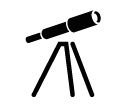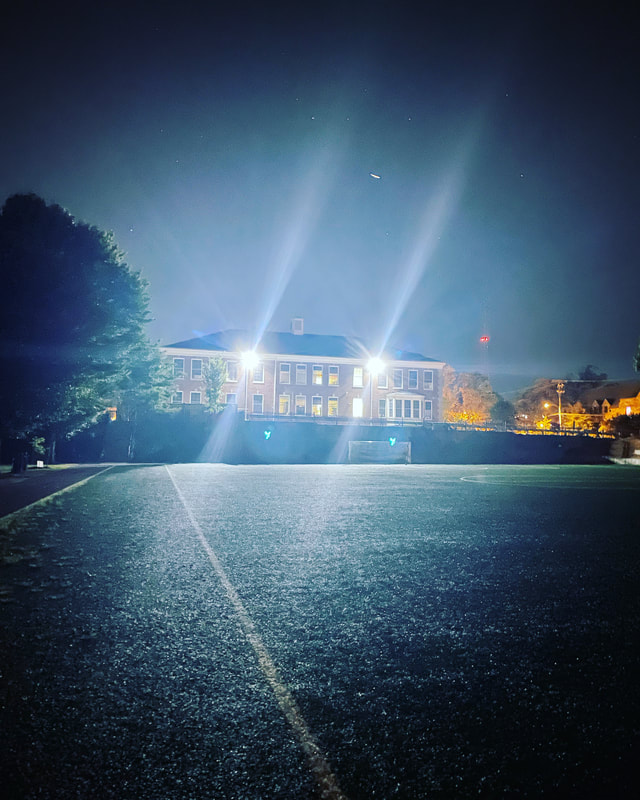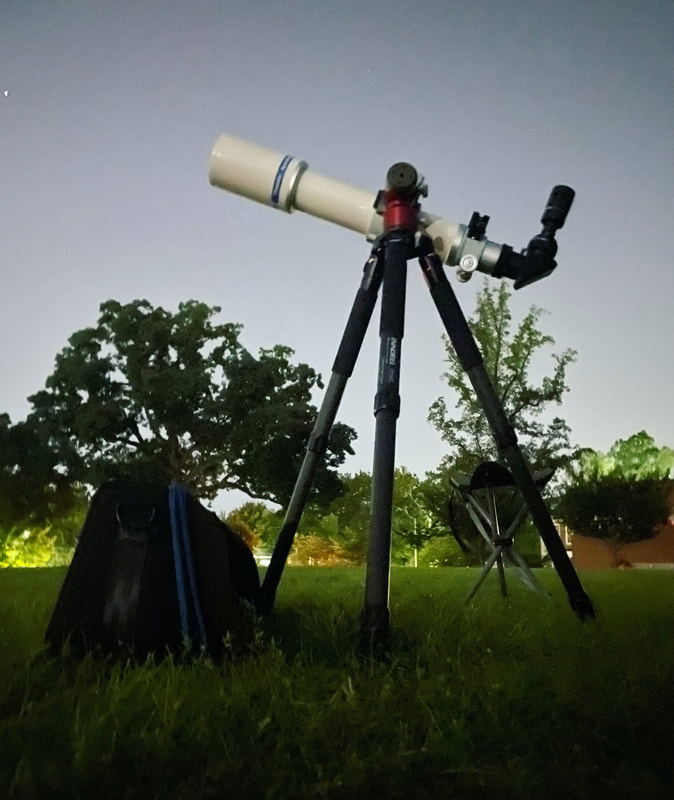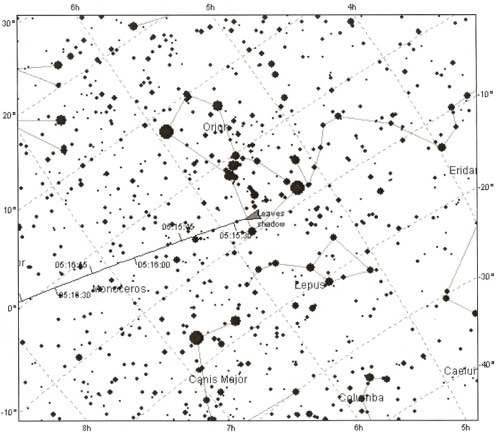|
Earlier this month, I set forth on a night of above-average seeing to the field that has become my favorite observing spot, just an eight minutes' walk from our new home. I heaved up the hill bordering the field, hauling my Takahashi and an uncomfortably heavy backpack, full of expectations. As I rounded the top of the hill, I saw . . . this. It's one thing to install new lights, but these were about the brightest I've seen in Washington, DC. I could scarcely believe my now not-at-all dark adapted eyes. Another observing spot - my third, since this blog began - ruined by newly installed, fluorescent lighting. It's demoralizing to experience firsthand how every patch of dark sky in the city is steadily being surrounded and at last consumed by unnecessary light. I wandered home, too stunned, too sore, and too tired to find another location to set up. In the days that followed, I reviewed my options. I wandered around my home, and found another location, in a neighborhood garden, just a bit farther than the field - but a lot more overgrown with bushes and trees, and no doubt overrun by summer bugs. Then there was another field, perhaps a 20-minute walk away, and (for now) dark at night. Wherever I went, it would be farther: and I had trouble enough walking the eight minutes to the now unusable field. I decided I had to reduce the weight of my grab-and-go setup, and in particular ease the strain on my shoulders. But how? MY DM-4, I thought, was about the lightest mount I could use with my Takahashi FC-100DZ. I agonized over whether to exchange the telescope for something smaller and less capable. I bought it in the first place because it was the biggest and best telescope - that cooled down quickly and provided spectacular lunar and planetary views - I could easily walk with for 10 or 15 minutes. But 20 minutes? And with the mount I needed, and my eyepieces? Eventually I figured that the step down to something smaller - a Takahashi FC-76 DCU, for example - was just too big a fall to be worthwhile. Since my tripod is already wonderfully light, I was left with my eyepieces and mount. The eyepiece problem was easy to solve. Rather than carry four Delos eyepieces, I decided to take just one eyepiece with me: a Baader Mark IV Variable Zoo. When equipped with its barlow lens, it would give me all the magnification I could want. There was a cost: a marginal loss in sharpness, perhaps, and a meaningful loss in field of view (which means something with a manual mount). Still, I found it a small price to pay compared to the alternative (swapping telescopes). I also started researching mounts. Readers will know I settled on the DM-4 after using an AYO II mount. Both mounts are impressive. The AYO II is lighter than the DM-4 and more compact, even as it seemed less durable. Now I wondered whether to exchange the DM-4 for another AYO II; weight, it seemed to me, had to come first. However, I soon found some intriguing newcomers in the quality manual mount market. One in particular stood out: the CT-20 by NoH's Mount, a little company owned by an independent craftsman in South Korea. On paper, the CT-20 weighed less than half as much as the DM-4 (and a third less than the AYO II), while being more compact than both. It cost less and handled more weight. It seemed almost too good to be true - but I bought it, and sold the DM-4. To my surprise, on the night the CT-20 arrived from South Korea, the sky was clear and both seeing and transparency were well above average. I greedily unpacked the little mount, hoping I'd be able to use it immediately. I was immediately impressed - and, to be honest, a little surprised - to find that its build quality seemed exceptionally high, on par certainly with the AYO II and DM-4. I was also delighted to find that the mount is even more compact than I'd expected (this is a rarity in amateur astronomy, where things tend to be much bigger than you thought they'd be).
This time I packed my mount and eyepiece into a much smaller, more comfortable backpack; all in all, I think I shaved about ten pounds from the load I had to carry. I walked the 20 minutes to the more distant field, and was delighted to find that I still had some energy left - and that the field was mercifully dark. I unpacked, set up, and to my astonishment soon found the mount at least as stable with the Takahashi as the DM-4 - and that without the vibration suppression pads that I used with the bigger mount! It also allowed my telescope to easily clear my tripod; with the DM-4, I'd needed a ($250!) tripod extender for that. I quickly slewed to the Moon, and there encountered another surprise: a stunningly sharp view of the lunar terminator in the best seeing I've experienced all year. The mountains on the lunar terminator in particular took on a gloriously three-dimensional character, and I easily made out countless subtle rilles and scarps. Rupes Recta, the so-called "Straight Wall" of the Moon, was perfectly illuminated and a particularly striking sight. I got a genuine sense - maybe for the first time - of how eighteenth- and nineteenth-century astronomers could have mistaken rectilinear features on the Moon for signs of intelligent life. I'm not sure a Delos eyepiece would have afforded a better view; in fact, I couldn't imagine a better view. Next up was Jupiter, and wow: what a sight. I have never - not even with my TEC 140 - seen the planet's Galilean moons look so clearly like colorful discs: like perfect little worlds, clearly distinct from stars. The planet's cloud belts and zones were phenomenally complex, with countless delicate filaments intruding from the dark belts onto the milky-white zones. The planet's southern hemisphere in particular boiled with complexity, especially in moments of seeing so good that the terrestrial atmosphere seemed simply to disappear. I observed the planet for a long time, spellbound. It was thrilling not only to feel so close to that alien world, but also to know what the Takahashi (and my entire grab-and-go kit) is really capable of. Then a sprinkler went off in the distance. It was too far to worry me - until I realized that another sprinkler could well be waiting under my feet. I quickly packed up and made my way back home. I'll come back to that field, sprinklers and all - but now other locations seem in reach, thanks to an unheralded little mount that may just be the best I've ever used.
3 Comments
|
Archives
March 2024
Categories
All
|





 RSS Feed
RSS Feed